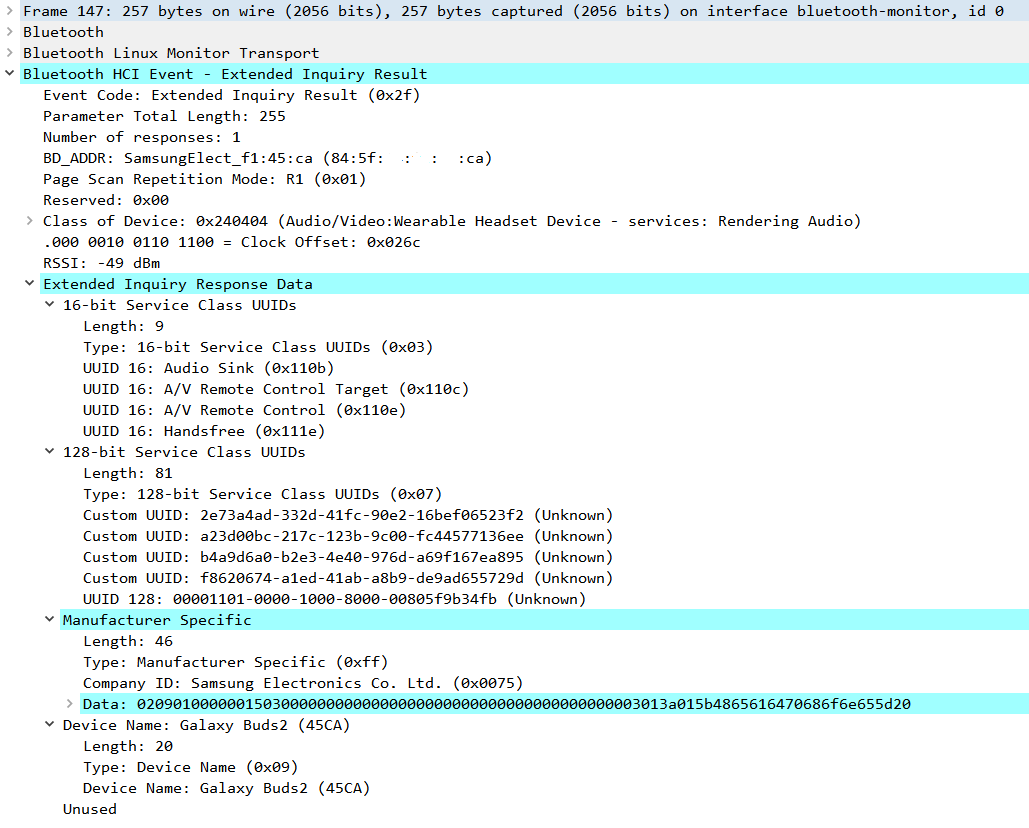Device discoverablility
BR/EDR
BLE
Bluetooth devices have the ability to be discoverable at all times, either because they actively advertise themselves by sending advertising packets or because they respond to inquiry type queries by indicating that they are available. This is for the convenience of the user, so that the devices automatically connect when they are nearby. It is a good practice that this discovery is not active by default and that it is only active on user demand, so that the user can activate and deactivate this state to avoid being detected and identified when it is not necessary, even penalizing the usability and user experience.
Discoverable devices by default allow the extraction of some of the information needed to be impersonated (MAC, Name, Supported Bluetooth Version…), as well as other relevant information. It is recommended to keep them non-discoverable as long as it is not necessary for pairing or connection.
Devices with input controls, such as buttons and keyboards, or similar items, should allow to change the discoverability status via these controls.
Description
To fulfil the requirement it must be proven that the device is only discoverable by changing the state to discoverable and only for a limited time or until a connection is established or the state is manually deactivated.
Related resources
To test the discoverability of the device, Bluetooth LE beacons or Extended Inquiry Response messages can be obtained using the following resources:
| ID | Description |
|---|---|
| BSAM-RES-04 | Bluetooth connections sniffing |
| BSAM-RES-05 | Capture of a Bluetooth connection |
| BSAM-RES-07 | Sending and receiving HCI messages |
| BSAM-RES-08 | Device discovery |
Example case
Bluetooth headphones are turned on to carry out this analysis. Opening Wireshark with BTVS allows the capture of packets for analysis. The “beacons” provide visibility of the device emitting them, in this case, the headphones.

The control FAIL when the device is discoverable by default.
This behavior could be improved by making the headset not discoverable unless the user forces this mode. To achieve automatic connection of the headset, the headset would have to try to initiate a connection to the mobile device or computer to which it was previously connected.
